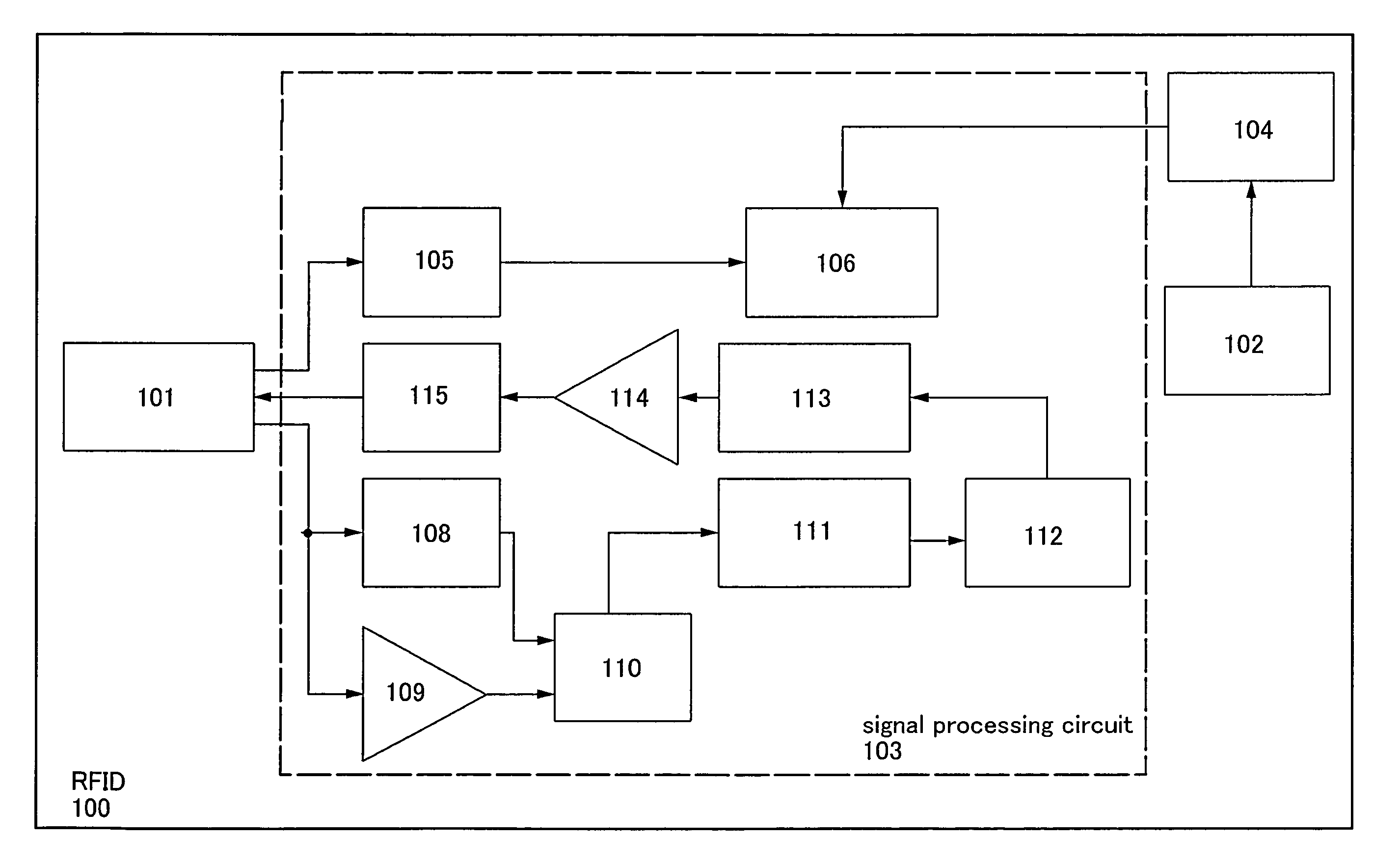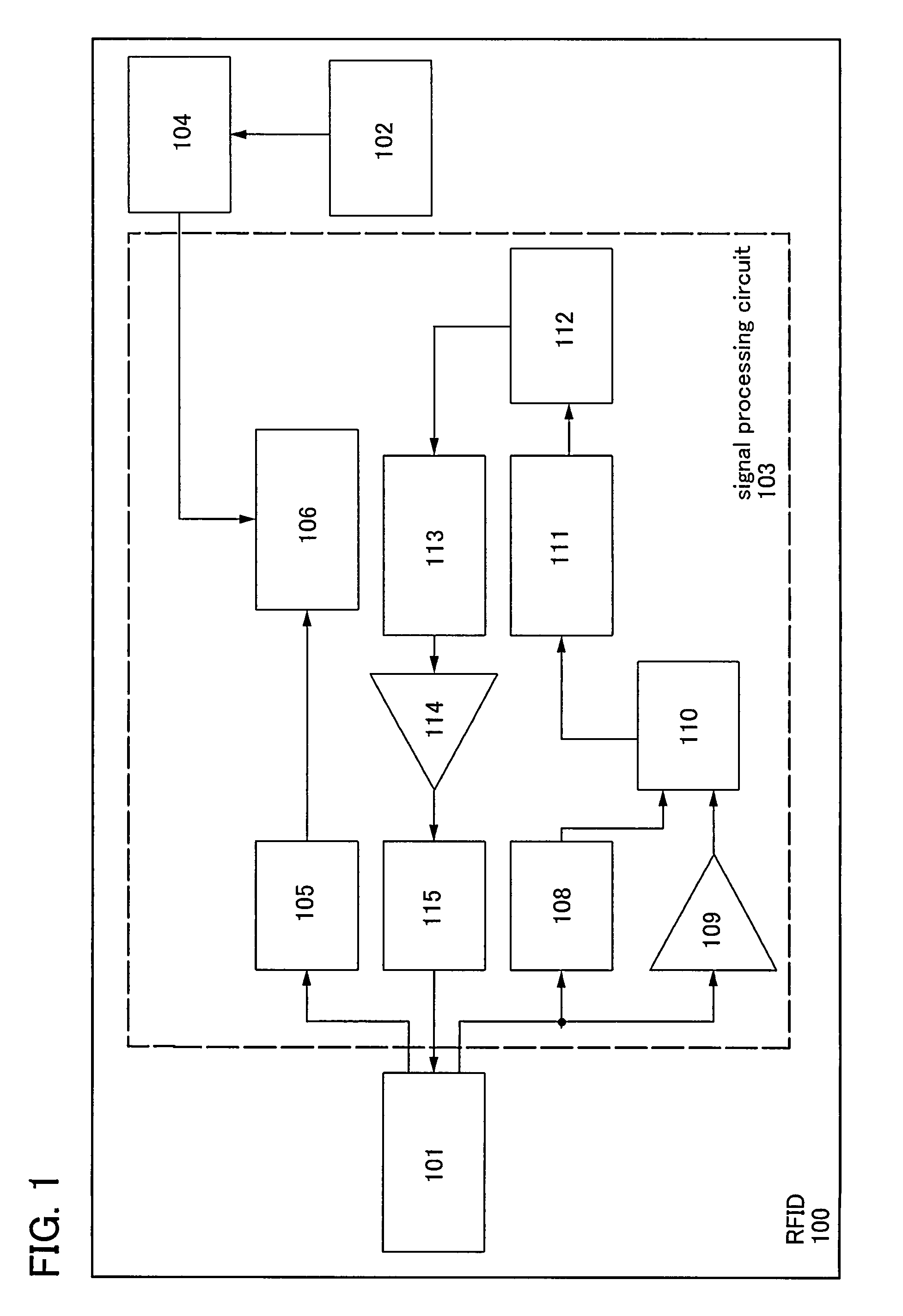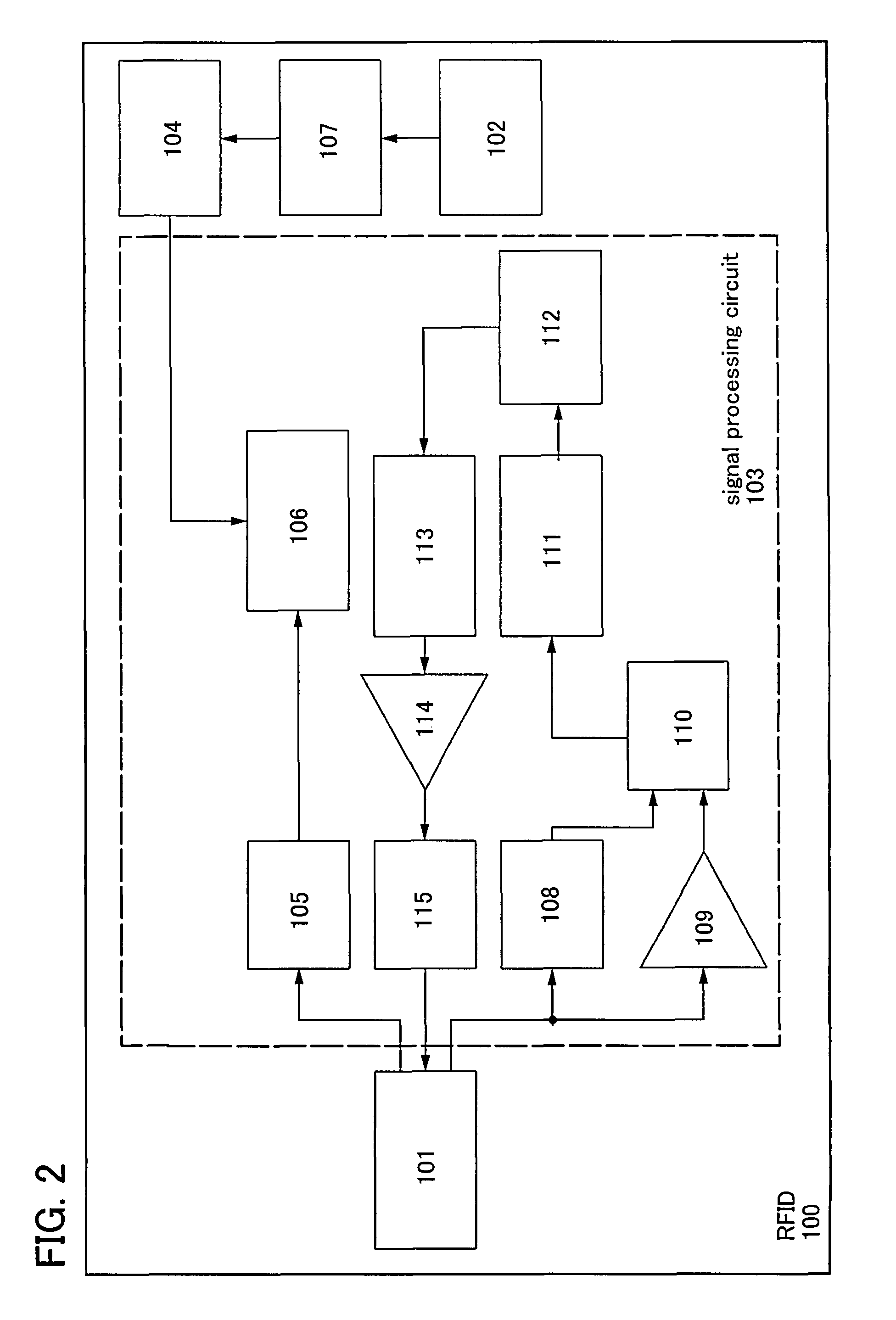Semiconductor device
a technology of semiconductor devices and semiconductors, applied in the direction of generators/motors, mechanical actuation of burglar alarms, instruments, etc., can solve the problems of power shortage, inability to check the remaining capacity of the cell, and the inability to generate electronic power for individual information transmission and reception, etc., to achieve the effect of increasing the communication range with the reader/writer and power shortag
- Summary
- Abstract
- Description
- Claims
- Application Information
AI Technical Summary
Benefits of technology
Problems solved by technology
Method used
Image
Examples
embodiment mode 1
[Embodiment Mode 1]
[0050]A semiconductor device used for an RFID of the invention is described using block diagrams shown in FIGS. 1 and 2.
[0051]An RFID 100 in FIG. 1 includes an antenna circuit 101, a power generation element 102, a signal processing circuit 103, and a battery 104. The signal processing circuit 103 includes a rectifier circuit 105, a power supply circuit 106, a demodulation circuit 108, an amplifier 109, a logic circuit 110, a memory control circuit 111, a memory circuit 112, a logic circuit 113, an amplifier 114, and a modulation circuit 115. Electric power obtained by the power generation element 102 is input to the battery 104, and is supplied to the power supply circuit 106 from the battery 104 as appropriate.
[0052]When the electric power obtained by the power generation element 102 is an alternating-current voltage, as shown in FIG. 2, the obtained alternating-current voltage is converted to a direct-current voltage through a rectifier circuit 107, and subsequ...
embodiment mode 2
[Embodiment Mode 2]
[0091]In this embodiment mode, in the semiconductor device including the RFID shown in Embodiment Mode 1, a structure where a booster antenna circuit (hereinafter referred to as a booster antenna) is included is described with reference to drawings. Note that the same portions as Embodiment Mode 1 are denoted by the same reference numerals and description of such portions is omitted.
[0092]Note that a booster antenna described in this embodiment mode is a larger antenna (hereinafter referred to as a booster antenna) than an antenna (hereinafter referred to as a chip antenna or an antenna circuit) which receives a signal from a reader / writer included in the semiconductor device and outputs the signal to a signal processing circuit of the RFID. The booster antenna is an antenna which can efficiently transmit a signal oscillated by a reader / writer or a battery charger to an objective RFID by being resonated in a frequency band in which the booster antenna is used, and...
embodiment mode 3
[Embodiment Mode 3]
[0106]In this embodiment mode, an example of a manufacturing method of the semiconductor device shown in the aforementioned embodiment modes is described with reference to drawings. In this embodiment mode, a case where the thermoelectric element shown in FIG. 7B is used as a power generation element is described by using a cross sectional view along a line A-B of the thermoelectric element in FIG. 7B.
[0107]First, as shown in FIG. 17A, a peeling layer 1903 is formed on one surface of a substrate 1901 with an insulating film 1902 interposed therebetween, and sequentially, an insulating film 1904 functioning as a base film and a semiconductor film 1905 (for example, a film containing amorphous silicon) are stacked thereover. Note that the insulating film 1902, the peeling layer 1903, the insulating film 1904, and the semiconductor film 1905 can be continuously formed.
[0108]The substrate 1901 is selected from a glass substrate, a quartz substrate, a metal substrate (...
PUM
 Login to View More
Login to View More Abstract
Description
Claims
Application Information
 Login to View More
Login to View More - R&D
- Intellectual Property
- Life Sciences
- Materials
- Tech Scout
- Unparalleled Data Quality
- Higher Quality Content
- 60% Fewer Hallucinations
Browse by: Latest US Patents, China's latest patents, Technical Efficacy Thesaurus, Application Domain, Technology Topic, Popular Technical Reports.
© 2025 PatSnap. All rights reserved.Legal|Privacy policy|Modern Slavery Act Transparency Statement|Sitemap|About US| Contact US: help@patsnap.com



